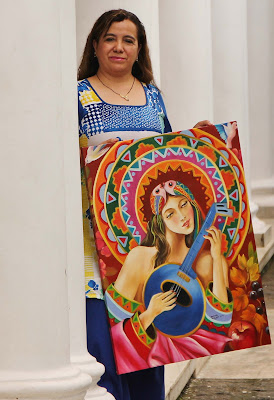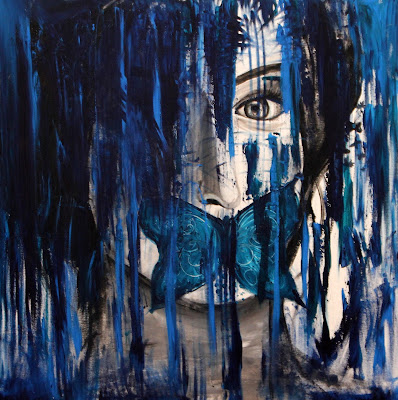The
installation, 'Reflecting (on) The Inhabited Crossroads', by The
Hashtag#Collective, makes you look into yourself and wonder which is
the real you
Photo of Parvathi Nayar by Albin Mathew
By
Shevlin Sebastian
Roy
Edwards, 58, from Perth, Australia, steps into the mirrored
installation called, 'Reflecting (on) The Inhabited Crossroads', at
the OED Gallery at Mattancherry. As he walks through a small maze, he
sees himself from different angles, thanks to the 60 double-sided
mirror panels that have been put up.
At
the centre is a chair. Roy sits down and observes himself once again.
Later, he tells artist Parvathi Nayar, “It made me realise the kind
of faces that we put on, in front of society. I am smiling but,
suddenly I see, from a reflection in the corner, that my smile is
slipping.”
Another
elderly woman says, “It is very disturbing to see these multiple
selves. After a while, you don't know what is real and what is not.”
One
eight-year-old boy tells Parvathi, “Aunty, it is a nice
playground.”
Parvathi
smiles as she recollects the memories. “The mirrors follow the
design of the naalukettu house,” she says. “It is built around a
quadrangle. When you navigate the maze, you can get confused. You
don't know which mirror turns and which does not. By the time you
come to the chair, at the centre, it is a place of stability, which
resembles the middle of the house.”
It
took over a week to put up the panels. “They were made elsewhere in
Mattancherry, and brought here,” says Parvathy. “There were a
team of workers who put up the metal framework. We were also helped
by architecture students, as well as photographers. Then we had the
lighting designer, Ranjith Kartha, do the lights in the inner square.
In the night, when you walk through, you are moving from darkness to
the light.”
There
are other subtle messages, too. “Because of urbanisation, we are
all trying to come to terms with what to keep and what to give up,”
she says. “There is also the larger tussle, between modernity and
the past, the new and the old. To each of us, it is a matter of
confusion: what do we retain, and what do we give up.”
This
project, on display till March 28, is placed in a collateral space of
the Kozhi Muziris Biennale. And it has been set up by The
Hashtag#Collective. Apart from Parvathi, the other members are the
Chennai-based architect Biju Kuriakose, and Abin Chaudhuri, an
industrial designer from Kolkata. “We have our own careers, but we
come together to do something creative,” says Biju. In fact, this
is the group's first major project.
“One
of the collective's ideas is to bring art to the people,” says
Biju. “Usually, when you see interactive and experiential art, it
is art-centric and esoteric. But what we have put up is art which you
can actually experience, remember, and take away.”
Meanwhile,
what enriched Parvathi was her interaction with the people who set up
the installation, and the many stories that she heard. “Ravi, who
helped with the fabrication, told me about his life in Mumbai where
he worked in a pharmaceutical company,” says Parvathi. “Then one
day he lost his job and had to return.”
Then
there was the fisherman Johnson, who had set up the ropes to anchor
the installation. “He told me about how his mother kept crying
because he drank so much,” says Parvathi. “He also went to so
many places to work, but had to come back because of a lack of
opportunities. There are so many rich and colourful stories in
Mattancherry.”
(Published
in The New Indian Express, Kochi and Thiruvananthapuram)



















